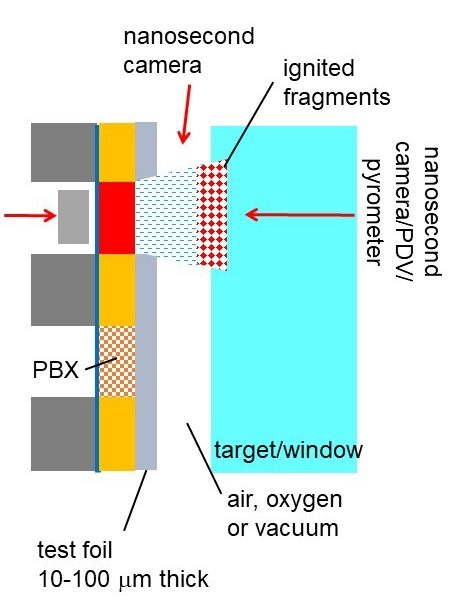Dynamic fragmentation
Laser-launched flyer plates are tiny bullets that can be used to study fragmentation of metal sheets or foils on a tabletop. In ductile fragmentation the sample stretches until it reaches the breaking point. In brittle fragmentation the sample cracks and shatters.
For Defense applications, most bombs consist of energetic ingredients and a metal casing. This casing is generally not energetic so it is deadweight. It would be useful to develop metal casings that are ductile so they can be rolled into casings but which are brittle so when the bomb detonates they fragment in a controlled manner. Even better if the fragments are energetic or pyrophoric (reacts with air). If the fragments are too big (e.g. if the casing splits into two) they are unlikely to hit any target and if they are too small (e.g. dust) they are too small to do any damage.
In the Dlott lab we are interested in finding ductile metal alloys that undergo a ductile-to-brittle transition under high-speed impact or under an energetic detonation. There is an infinite universe of metal alloys that can be produced by combinatorial synthesis, so we need high-throughput characterization. We would look for alloys that are generally brittle but which can be doped to become ductile so they are on the edge of brittleness.
The figure on the right shows how we configure samples so we can either observe them under flyer plate impact or the flyer plate can be used to detonate an explosive to fragment the sample.

This work is currently at its earliest stages. The image below shows some high-speed video of a metal foil being impacted by a flyer plate moving toward the observer but behind the test foil. Al is ductile. Ti is brittle. Zr is brittle and pyrophoric. The yellow numbers indicate time (in nanoseconds) after impact. The dark regions are changes in the foil reflectance that can be used to measure the spatial distribution of temperatures.


